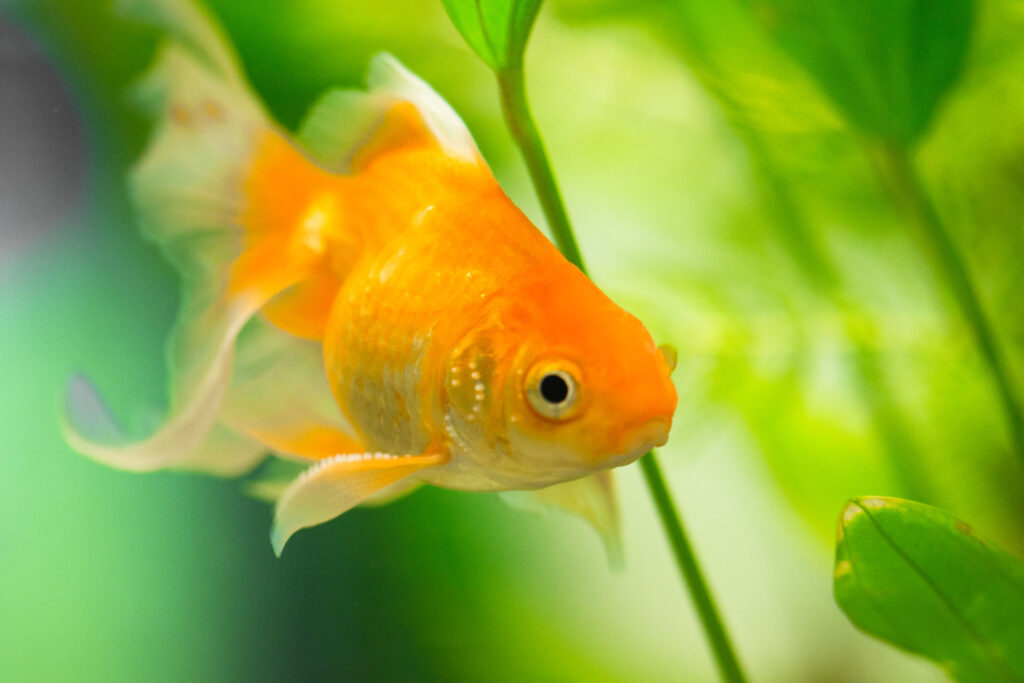Starting Out with Fish
Are you considering getting fish as a pet? Keeping fish as pets can be a rewarding hobby and designing and maintaining your aquarium can be a great creative outlet. Watching your fish swim around is both relaxing and fun.
According to research by the National Marine Aquarium, Plymouth University, and the University of Exeter, people who spend time watching aquariums could see improvements in their physical and mental well-being. The researchers found that viewing aquarium displays led to noticeable reductions in blood pressure and heart rate, and that watching groups of fish helped to hold people’s attention for longer and improve their moods.
Keeping fish as first pets teaches children about accountability and responsible pet ownership, both of which are great lessons they will benefit from in the future of pet keeping and personal development.

Which type of fish is an ideal first pet?
Which Fish to Choose – Goldfish or Tropical Fish?

Goldfish are a great beginner’s pet and are inexpensive to buy and keep.
All you need to spend is a few minutes each day for feeding the fish and visually checking their health, 10 minutes every week for water testing and 20 minutes or so every couple of weeks for water changes. Goldfish are relatively undemanding pets and, with the right care, can easily live for 20 or more years. For children, goldfish are an ideal first pet — helping them understand their responsibilities in caring for other creatures. But whatever your age, goldfish make great pets.
Tropical freshwater fish are some of the most colourful creatures to be found anywhere in the world.
They are easy to keep, so you don’t need previous fishkeeping experience to set up and successfully maintain a beautiful tropical freshwater aquarium. Many of the popular species are small and don’t need much space, and the variety available to the fish keeper is breathtaking — there are more than 2,000 species to choose from!
The sheer range of tropical fish species can be bewildering for the beginner. The following list shows just a few favourites that you may wish to consider. All are suitable for a mixed-species or ‘community’ aquarium. When you select a combination of top-, middle- and bottom-dwelling fish, the whole aquarium will be vibrant with activity and colour.

- Livebearers (e.g. guppies, platies and swordtails)
- Small to medium tetras (e.g. Neons; Cardinals; Glowlights; Black-widows; Hatchetfishes)
- Small to medium barbs (e.g. Cherry barbs; Checker barbs; Six-banded barbs)
- Danios (e.g. Zebra danios; Pearl danios; Leopard danios)
- Corydoras catfishes (over 50 species widely available in the hobby)
CHOOSING FISH CHECKLIST
When choosing your fish, check whether they will be suitable for your aquarium by asking the shop staff the following questions:
- Is the fish peaceful and suitable for a community aquarium?
- How large will it get? A few popular species grow very large, such as the common Plecostomus Catfish (may reach 45 cm), the Giant Gourami (45 cm) and the Tinfoil Barb (30 cm).
- Does the fish have any special husbandry requirements (e.g. special water conditions or particular dietary needs)?


ADDITIONAL TIPS
Avoid difficult-to-keep fish until you gain expertise. Some aquarium shops stock tropical marine (seawater) fish. However, these can be very challenging to keep and are best avoided until you have gained lots of experience with freshwater species.
FREQUENTLY ASKED QUESTIONS
Click on the below questions to reveal the answers.
As a general guide for goldfish, we recommend 13-35 litres of water for one goldfish and 45-75 litres for two goldfish. Every 2.5 cm of goldfish requires 8 litres of water. Bear in mind that the goldfish you purchase are likely to be youngsters that haven’t reached adult size. Goldfish grow quickly and can produce a lot of waste.
Distinguishing between sexes is difficult. One clue is during breeding (typically around spring) when mature male goldfish develop tiny white spots on their gill covers and pectoral fins. These are known as spawning tubercles — don’t mistake these spots for white spot disease.
Yes. Their sticky eggs are about 1.5 mm (one 16th of an inch) in diameter. They are normally scattered amongst fine-leafed aquatic plants. A female goldfish may lay several hundred eggs. The young fish hatch in a few days. Consult a good goldfish book if you wish to breed them.
It is best not to do this. Although goldfish have a wide temperature tolerance, they prefer not to be kept under constant tropical conditions.
This depends largely on the size of your aquarium, notably its water surface area. As a general guide, every 2.5 cm of tropical fish requires 3.8 litres of water. It is important to know the mature size of the fish in order to determine how much room they will need. NOTE: It is wise for beginners to understock the aquarium (e.g. half capacity) until they gain experience.
Guppies, platies and swordtails are recommended for beginners as they give birth to live young (hence they are known as ‘livebearers’). It is easy to tell the sex of a livebearer by looking at its anal fin (this is the unpaired fin situated between the fish’s belly and tail): the male’s anal fin point is pointed into a tube-shaped organ, whereas that of the female is normal fan-shaped. Livebearers will naturally breed in the community aquarium. Ensure the aquarium has lots of tall bushy plants so the babies can hide away (usually they hide at the water surface); otherwise they may get eaten. Most other species of tropical fish are egg layers, and these are more difficult to breed in the community aquarium. You’ll need a separate tank and equipment to successfully breed egg-laying fish as the adults must be spawned in an aquarium by themselves. Most aquatic retailers stock a range of books explaining how to keep and breed various types of egg layers.
